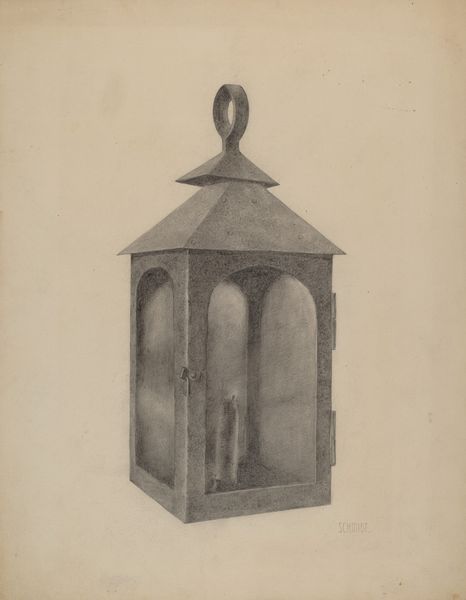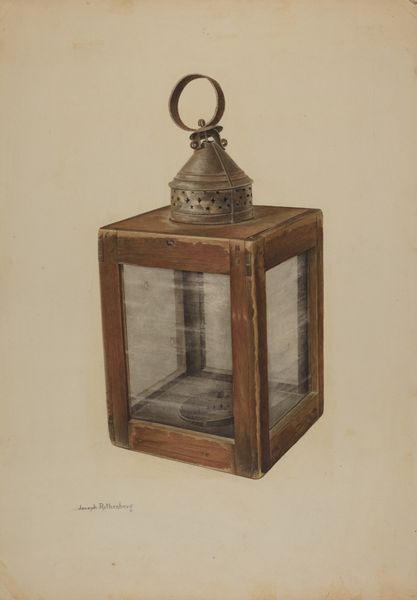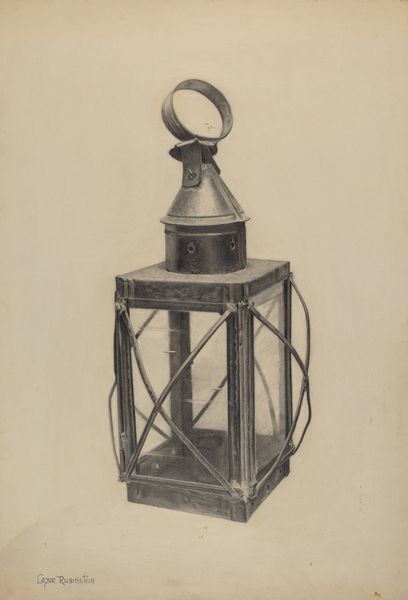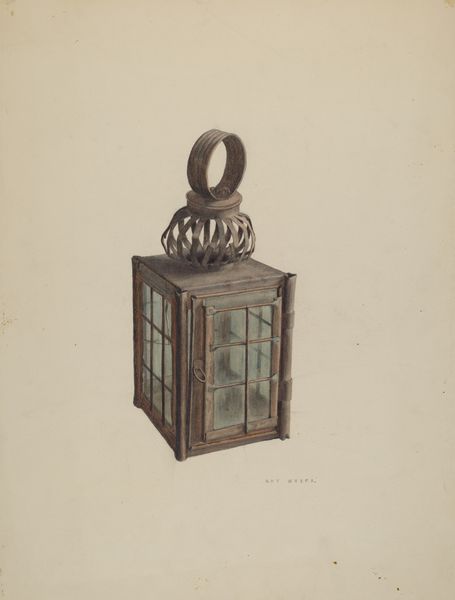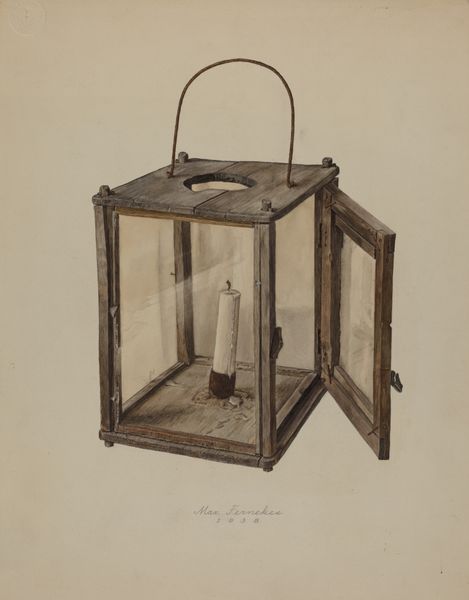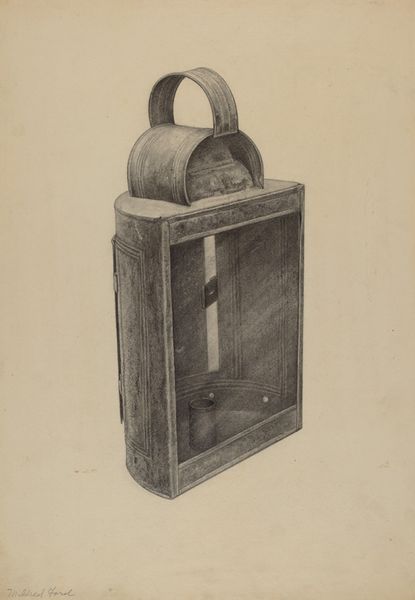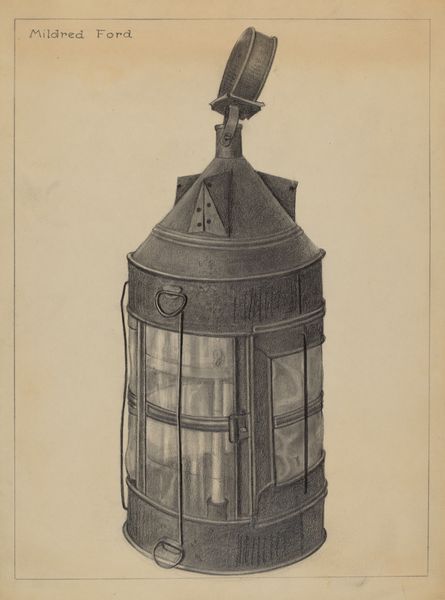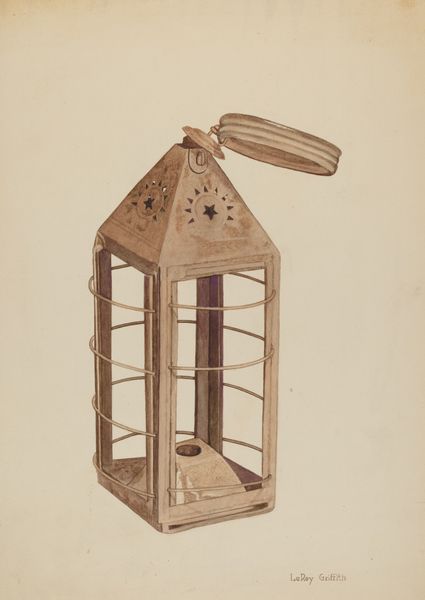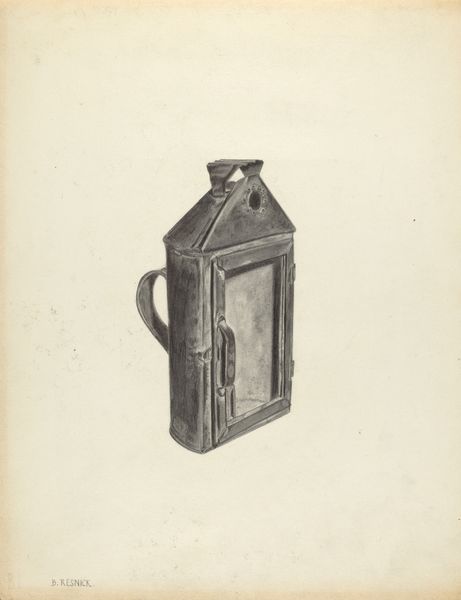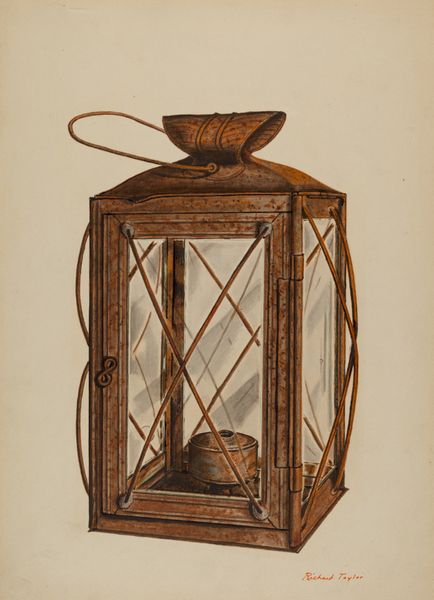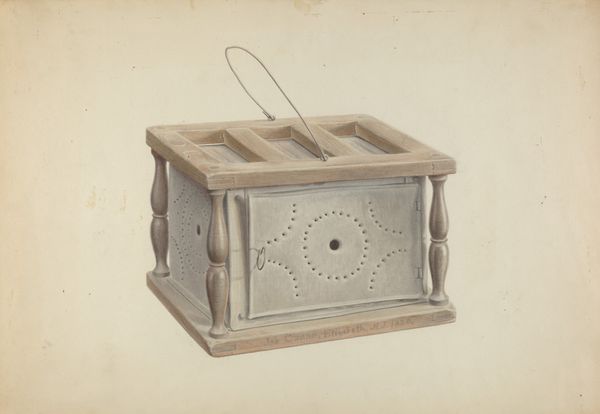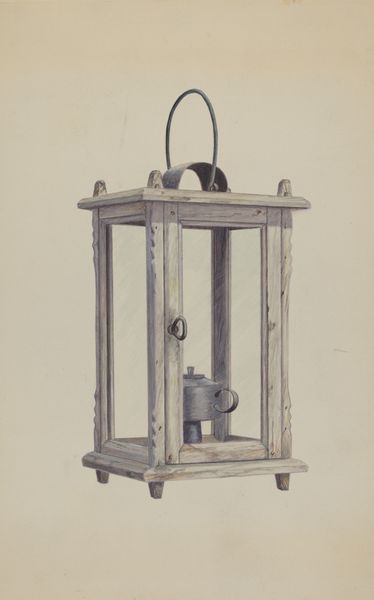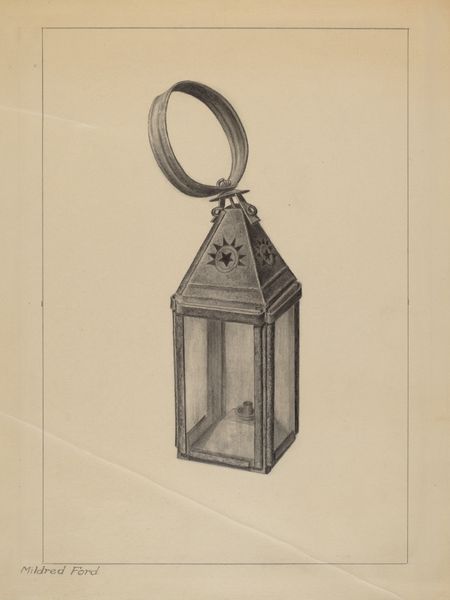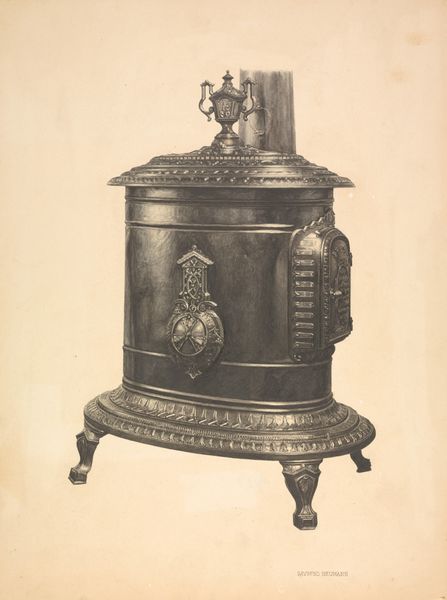
drawing, pencil
#
drawing
#
pencil
#
realism
Dimensions: overall: 29 x 22.5 cm (11 7/16 x 8 7/8 in.)
Copyright: National Gallery of Art: CC0 1.0
Curator: We’re looking at Henry Granet’s drawing "Lantern for Candle," likely created between 1935 and 1942. It's rendered in pencil. Editor: The first thing that strikes me is its starkness, almost severe. The precise rendering of this utilitarian object elevates it. What I find especially intriguing is the handling of light and shadow despite its execution in monochrome, almost mimicking the subtle glow emanating from a real candle lantern. Curator: Indeed, it's fascinating how Granet imbued such a simple object with such significance. These lanterns were common tools for laborers. Consider the socio-economic implications, especially during the period he made this, during the Great Depression. A source of light represented sustenance for some people. Editor: Good point. I also see it as a study in form. Look at the rectangular cage softened by the cylindrical top and arched handle. The linear bars create a visual rhythm that encloses what appears to be a solitary candle stub. The composition balances geometric shapes with a subdued tone. Curator: Absolutely. Granet may also be engaging in a larger dialogue about craft. With increasing industrialization, handmade lanterns evoke ideas about a bygone era where things are created more slowly, perhaps invoking an argument about the ethics of different labor forms. Editor: The artist seems captivated by the geometric harmony. It's almost a celebration of utility, elevating something so functional to an object of beauty. And I can’t ignore how, using a single pencil, Granet coaxes a feeling of volume. Look at the upper section, a type of crowning structure atop the primary form of the lantern, complete with delicately shaded ventilation holes. Curator: That's very well observed! Understanding the socio-historical conditions under which it was made and displayed invites reflection on what it meant to depict working-class imagery. The lantern serves as a quiet testament to endurance through those challenging years. Editor: For me, I walk away with a new appreciation for line and form through this seemingly humble image. Curator: And I appreciate how studying this piece lets us consider everyday laborers and the meanings we may extract from that memory.
Comments
No comments
Be the first to comment and join the conversation on the ultimate creative platform.
